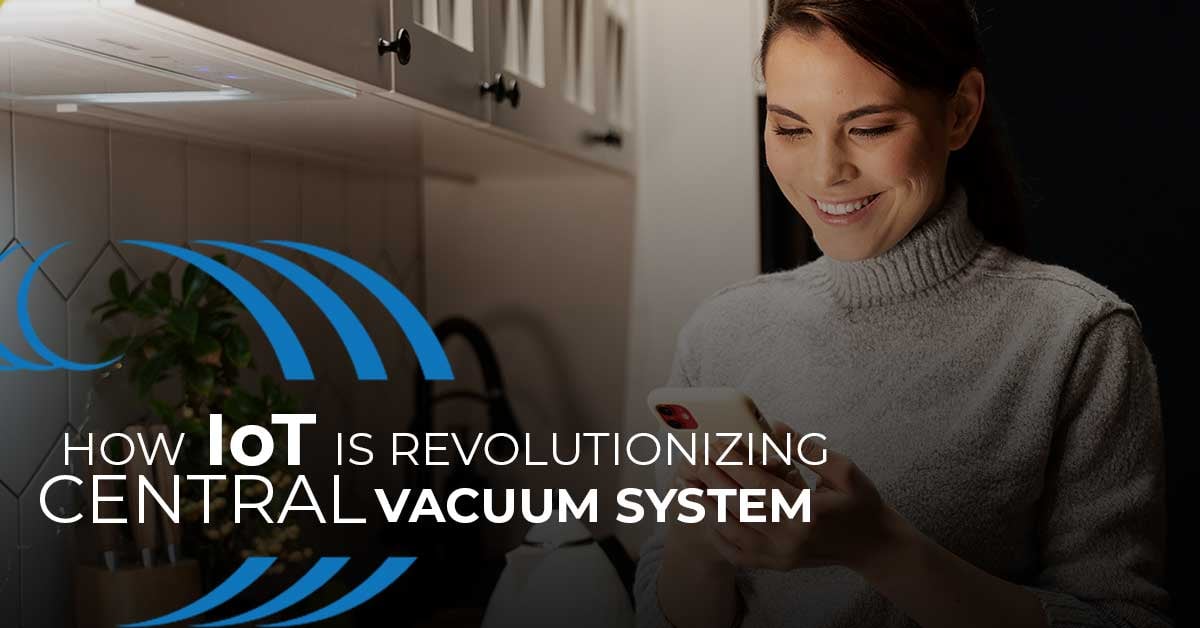
Boosting Productivity in Office Buildings with Central Vacuum
In today’s fast-paced work environment, maintaining a clean and organized office space is crucial for productivity. Office buildings often struggle with keeping their premises clean

The Internet of Things (IoT) is revolutionizing various aspects of our lives, and central vacuum systems are no exception. With IoT integration, central vacuum systems are becoming smarter, more efficient, and more user-friendly. In this article, we will explore IoT’s impact on central vacuum systems, how it’s revolutionizing this technology, and what the future holds with IoT advancements.
IoT has transformed central vacuum systems in several significant ways:
Remote Access: IoT-enabled central vacuum systems can be controlled remotely using a smartphone or tablet. This means you can start or stop your vacuum, schedule cleaning sessions, and monitor its performance from anywhere.
Predictive Maintenance: IoT devices can collect and analyze data about the vacuum system’s performance, helping predict potential issues before they become problematic. This leads to timely maintenance and increased lifespan of the system.
Improved Efficiency: By analyzing usage patterns and data, IoT can optimize the operation of the central vacuum system, leading to improved efficiency and energy savings.
IoT is revolutionizing central vacuum systems by making them smarter and more connected. Here’s how:
Smart Cleaning: IoT technology enables central vacuum systems to adapt to different floor types automatically, adjusting suction power for optimal cleaning.
Real-time Monitoring: Users can monitor their system’s performance in real-time, thanks to IoT. This includes checking the dust bag level, filter status, and overall system health.
Integration with Smart Home Ecosystem: IoT-enabled central vacuum systems can be integrated with other smart home devices. For instance, you could program your vacuum to start cleaning when your smart door lock indicates you’ve left the house.
The integration of IoT technology has paved the way for the development of smart central vacuum systems. These systems offer advanced features like voice control, automatic scheduling, and adaptive cleaning. They can be controlled via a mobile app, allowing users to manage their vacuuming tasks conveniently. Some models can even map out your home and create efficient cleaning routes, ensuring comprehensive and systematic cleaning.
IoT advancements are continually improving central vacuum technology:
Artificial Intelligence (AI): Combined with IoT, AI allows central vacuum systems to learn from past cleaning sessions, identify high-traffic areas that need more frequent cleaning, and even detect the type of dirt or stain.
Advanced Sensors: IoT-enabled sensors can detect things like dust levels, filter condition, and system performance. This data can help users maintain their system better and can also be used to automate specific tasks.
Energy Management: IoT technology can optimize the operation of the central vacuum system based on energy consumption, contributing to a more eco-friendly home.
As IoT technology continues to evolve, we can expect further innovations in central vacuum systems. We might see systems capable of self-maintenance or systems that can communicate with other smart devices to create a fully automated cleaning schedule based on your daily routine. Moreover, as voice-assistant technology advances, controlling your central vacuum system could become as simple as giving a verbal command.
In conclusion, IoT is undoubtedly revolutionizing central vacuum systems, making them smarter, more efficient, and more convenient to use. As IoT technology continues to advance, we can look forward to even more innovative features that will further enhance the functionality and ease-of-use of central vacuum systems. The future certainly looks bright for IoT and central vacuum technology.

In today’s fast-paced work environment, maintaining a clean and organized office space is crucial for productivity. Office buildings often struggle with keeping their premises clean

Central vacuums in animal shelters & vet clinic: Explore how these systems boost hygiene, efficiency, and air quality.

In the world of home entertainment, a home theater is a luxury that many homeowners dream of. It’s an immersive experience that brings the magic

A central vacuum system is a significant investment that promises convenience, powerful suction, and improved indoor air quality. However, choosing the right central vacuum hose
Our home automation products are at the forefront of technology, offering a blend of convenience, security, and efficiency. As a Homewave dealer, you’ll be part of a network transforming homes into smart, futuristic spaces.
Embark on this rewarding journey with us and leverage the power of innovative technology.
Please fill out this form and become a Homewave Dealer.